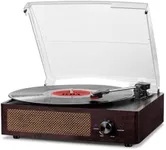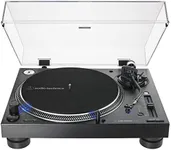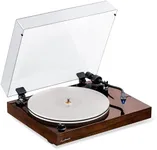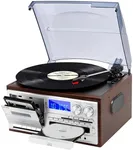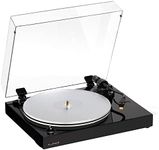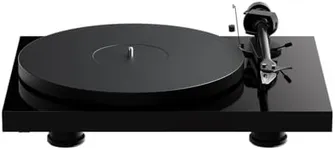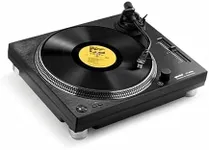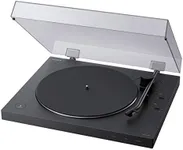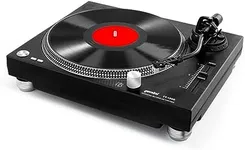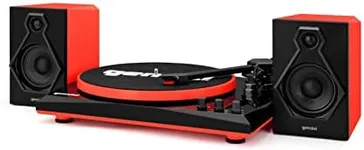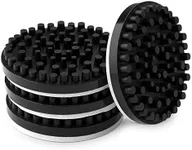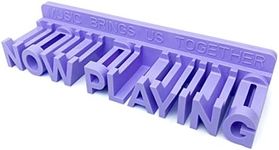Buying Guide for the Best 3 Speed Turntables
When choosing a 3-speed turntable, it's important to consider several key specifications to ensure you get the best fit for your needs. A turntable is a device used to play vinyl records, and the right one can greatly enhance your listening experience. By understanding the key specs, you can make an informed decision and enjoy your music collection to the fullest.Speed SettingsSpeed settings refer to the rotational speed of the turntable platter, measured in revolutions per minute (RPM). The three common speeds are 33 1/3, 45, and 78 RPM. This spec is important because different records are designed to be played at different speeds. Most modern albums play at 33 1/3 RPM, singles at 45 RPM, and older records at 78 RPM. Ensure the turntable you choose supports all three speeds to accommodate your entire record collection.
Drive TypeThe drive type of a turntable refers to how the motor connects to the platter. There are two main types: belt drive and direct drive. Belt drive turntables use an elastic belt to spin the platter, which can reduce motor noise and vibration, making them ideal for home listening. Direct drive turntables have the motor directly connected to the platter, providing more consistent speed and torque, which is preferred by DJs and for scratching. Choose a belt drive for casual listening and a direct drive if you plan to DJ or need precise control.
Cartridge and StylusThe cartridge and stylus are the components that read the grooves on the record and convert them into audio signals. The quality of these parts can significantly affect sound quality. Cartridges can be either moving magnet (MM) or moving coil (MC), with MM being more common and easier to replace. The stylus, or needle, can be elliptical or spherical, with elliptical providing better sound quality. For general use, an MM cartridge with an elliptical stylus is a good choice, while audiophiles might prefer an MC cartridge for superior sound.
Platter MaterialThe platter is the part of the turntable that the record sits on. Platter material can affect sound quality and stability. Common materials include plastic, aluminum, and acrylic. Plastic platters are lightweight and affordable but may not provide the best sound quality. Aluminum platters are more durable and offer better sound isolation. Acrylic platters are considered high-end, providing excellent sound quality and stability. Choose a platter material based on your sound quality preferences and budget.
TonearmThe tonearm is the part of the turntable that holds the cartridge and stylus and moves across the record. Tonearms can be straight or S-shaped, with straight arms being more common and easier to set up. The material and design of the tonearm can affect tracking accuracy and sound quality. Look for a tonearm with adjustable counterweight and anti-skate features to ensure proper tracking and minimize record wear. For most users, a straight tonearm with these adjustable features will provide a good balance of ease of use and performance.
Built-in PreampA built-in preamp amplifies the signal from the turntable to a level that can be used by standard audio equipment. This is important because turntables produce a very low-level signal that needs amplification. Some turntables come with a built-in preamp, making them easier to connect to modern audio systems without needing an external preamp. If you have a receiver or amplifier with a phono input, you may not need a built-in preamp. Choose a turntable with a built-in preamp for convenience, especially if you plan to connect it to a system without a dedicated phono input.
Build QualityBuild quality refers to the overall construction and materials used in the turntable. A well-built turntable will be more durable, stable, and provide better sound quality. Look for turntables with solid plinths (the base of the turntable), quality materials, and good craftsmanship. A heavier turntable can help reduce vibrations and improve sound quality. Consider your usage and environment when evaluating build quality; if you plan to use the turntable frequently or in a setting with potential vibrations, a sturdier build will be beneficial.
